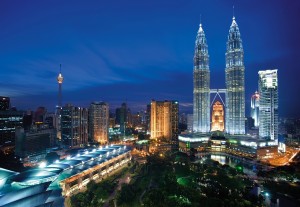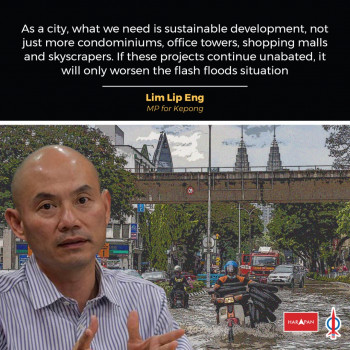By Saleh Mohammed
 The current population Klang Valley is 7.2 million (about a quarter of Malaysia’s total population). By 2020, its population is expected to be 10 million. Urbanisation is expected to reach 70 per cent by 2020. At this rate, Klang Valley will be home to about 20 million by 2030. The authorities have lofty ambitions. The Greater Kuala Lumpur/Klang Valley’s National Key Economic Area (NKEA) goals are to be both in the top 20 most livable cities list (EIU’s Livability Index Survey) and the top 20 in the world for economic growth.
The current population Klang Valley is 7.2 million (about a quarter of Malaysia’s total population). By 2020, its population is expected to be 10 million. Urbanisation is expected to reach 70 per cent by 2020. At this rate, Klang Valley will be home to about 20 million by 2030. The authorities have lofty ambitions. The Greater Kuala Lumpur/Klang Valley’s National Key Economic Area (NKEA) goals are to be both in the top 20 most livable cities list (EIU’s Livability Index Survey) and the top 20 in the world for economic growth.
Would Klang Valley sustain the NKEA goals in 2030 and beyond?
Given the limited size of the city of Kuala Lumpur (KL), it would worth the while to consider the following strategies. These actions call for a change in mindset and attitudes including political maturity.
Spread development area
KL has to co-operate with Selangor state for future developments. This strategy calls for political maturity especially if the two governments are not from the same party. By the way, aren’t the governments elected to work for the benefit and well-being of the rakyat? It would be a good idea to expand a city and relocate a portion of its development to the newly expanded area. The extended area, would allow for easy commute, culture extension and at the same time be included in the city’s overall future planning.
Since it contributes to KL’s GDP, the new extended area would grow with the expansion of existing infrastructure and later transform into a new economic zone that releases population and reduce resource tension within KL. A “regional imbalance” if left unchecked will see a lot of traffic problems, waste disposal and also energy consumption will increase disproportionately. These are essential elements of not only economic growth but of inclusiveness in the sharing of economic benefits.
However, if the above is not feasible, Putrajaya could be further developed as an extension of KL but this would have limitations.
Renting as opposed to purchasing property
This strategy would help contain the exorbitant prices of properties in the KL city area and help reduce the high household debt as one of the biggest component is the the cost of buying a property. It also increases mobility when one has to change job to a different location. It calls for local authorities to draw up policies to encourage such programme.
Buying a house often tempts people to borrow more than they can afford and it drives up debt to income ratios especially for young buyers. In today’s economy, many people struggle to make ends meet. By renting, one has the option to downgrade into a more affordable living space at the end of their lease or when the family gets smaller. With homes getting larger it is often much more affordable to maintain an apartment or small rental home as opposed to a larger home.
There is this “Rule of 15″ before one makes a decision to rent or buy. If you can buy a home in your area for less than 15-times what your annual rent is, than financially it makes sense to buy than to rent. In an era of historically low interest rates and perpetually rising real estate values, it appears buying is the obvious choice but how long will this last?
Congestion pricing
The time has come to charge private vehicles for entering certain roads and major traffic arteries according to the time of day and the level of congestion. The fees would keep private vehicles off the road during rush-hour and encourage the use of buses – a much less capital intensive and dynamic solution to the traffic congestion problem. We may not even need a new MRT line. Without doubt, SPAD has to give due consideration on the bus system in KL and has to be upgraded.
Limit population in KL
This is easier said than done but we have put limits to many things including debt-to-GDP ratio. Can’t we give this a try? A committee could be formed to look at the pros and cons of this suggestion. For starters, the benefits are aplenty – cleaner air, less congestion, less need for expensive transport systems like MRT, lesser demand for housing leading to affordable pricing and the list goes on.
Hopefully, the relevant authorities would consider the above initiatives to place KL both in the top 20 most livable cities list and the top 20 in the world for economic growth.
* The views expressed in this article are the personal opininion of the columnist and this article first appeared in freemalaysiatoday.com



